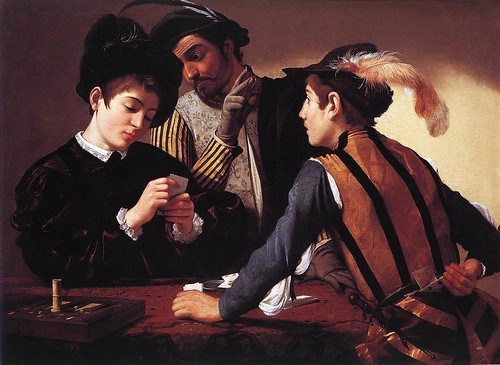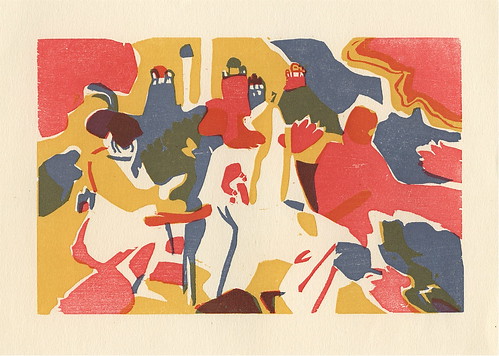
Wednesday, June 30, 2010
Sadie Valeri - Pewter Pitcher

Tuesday, June 29, 2010
Mia Araujo - Two Spirits
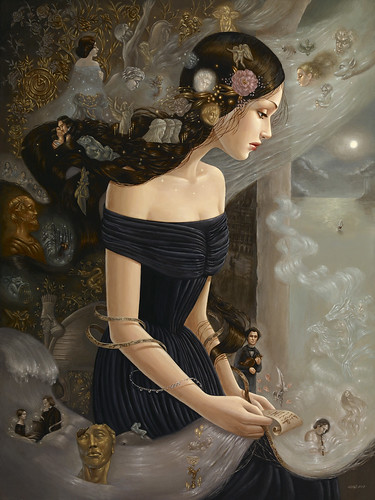
Monday, June 28, 2010
Pieter de Hooch - Interior with Women beside a Linen Chest [1663]

Everything in the picture tells us that this is the house of respectable people. The house has more than one room for a start. Furthermore, the linen chest is a real showpiece. The arched panels on the doors and the ebony decoration indicate that the cupboard was made in around 1650. The same cupboard and the figure of Perseus above the door also appear in another painting by De Hooch from 1658. Pieter de Hooch made this painting soon after he had moved to Amsterdam from Delft. At this time he began to paint more opulent interiors than he had in Delft.
Billy Morrow Jackson - 3:30 pm [1971]
[Oil on fibreboard, 106.4 x 122.3 cm]
Sunday, June 27, 2010
Gallery Announcement
Hello all. On 17th July I am running just a mile to raise money for Myeloma UK, the charity that does such good support work for Myeloma sufferers like myself. They are only a small charity and their Patron is Maureen Lipmann, whose husband Jack Rosenthal (of Londons Burning fame) died of the disease. I hope you can help, my target is £500, and I'm well on the way to that. The company I work for has also agreed to put in some money, and how much depends on how much I can raise. You can donate on the link below and also look at the donations so far. I will be running on my Club's track with the Junior section, who will no doubt want to beat me, and no doubt will!!
I hope you can help.
Best Regards - Pete
http://www.justgiving.com/MacrunnerPete
Kevin Peterson - The Devide III [2008]
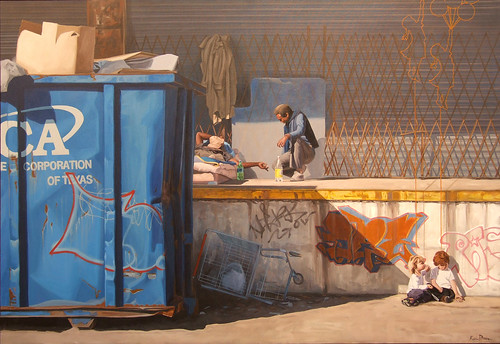
Saturday, June 26, 2010
Caravaggio - The Cardsharps [c.1596]
Henry Bacon - Beach at Etretat [1881]
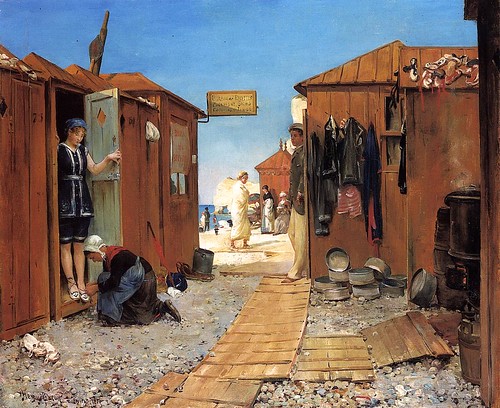
Friday, June 25, 2010
Domenico Ghirlandaio - Portrait of Giovanna Tornabuoni [1488]

Daniel F Gerhartz - Her Favourite Place

See: http://www.danielgerhartz.com
Thursday, June 24, 2010
Sergej Glinkov - Port au Prince [2008]

[Oil on burlap, 90 x 150 cm]
Wednesday, June 23, 2010
Pierre Puvis de Chavannes - Hope [c.1872]

Tuesday, June 22, 2010
Wassily Kandinsky - Orientallsches
[Colour woodcut, 125 x 190 mm]
Monday, June 21, 2010
Lorser Feitelson - Genesis #2 [1934]
[Oil on fibreboard, 102.1 x 121.8 cm]
Sunday, June 20, 2010
Vincent van Gogh - Branch of an Almond Tree in Blossom [1890]
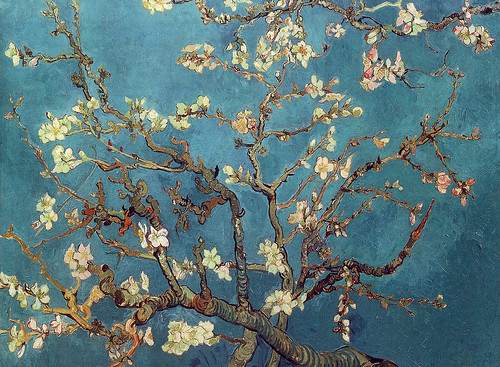
Friday, June 4, 2010
Gerrit van Honthorst - The Matchmaker
Francesco Hayez - Susanna Al Bagno [1850]
Thursday, June 3, 2010
Emilio Baz Viaud - Self-Portrait of the Adolescent Artist [1935]
Born in Mexico City, Emilio Baz Viaud (1918 – 1991) was a little known painter whose work has only just started to be evaluated by experts. He studied architecture but was always interested in painting, and was a pupil of the artist Manuel Rodríguez Lozano, who guided him along the path to his real vocation as an artist. He did not give an individual exhibition until 1951, although he was featured in several collective exhibitions together with such eminent artists as Siqueiros and Diego Rivera. His meticulous technique in "trompe-l'oeil" style, achieved by applying oil paints to a dry surface, was praised by his colleagues and critics of the day, who unanimously compared his verism with the brushwork, to that of the great Renaissance masters such as Dürer and Boticelli. In the seventies he went through a period of abstract painting, but he is mainly known for his work done before 1955.
Juan Gris - Bananas
At first Gris painted in the analytic style of Cubism, but after 1913 he began his conversion to synthetic Cubism, of which he became a steadfast interpreter, with extensive use of papier collé. Unlike Picasso and Braque, whose Cubist works were monochromatic, Gris painted with bright harmonious colors in daring, novel combinations in the manner of his friend Matisse. He died in Boulogne-sur-Seine (Paris) in the spring of 1927 at the age of forty, leaving a wife, Josette, and a son, Georges.
Gabriel Metsu - The Old Drinker [c.1658]

Metsu shows the details of the drinker's surroundings with great finesse: the pewter jug, the felt buttoned coat, the fur trimming of the cap and the German stoneware pitcher. Beside the pitcher is a slate on which the number of beers is chalked up. The sign of a red deer is painted on the keg, a rather vague detail against a brown background. This was the trademark of the Amsterdam brewery 't Roo Hart (Red Deer). Around 1650 Metsu lived on Prinsengracht, near this brewery. The deer is a subtle aside in which the painter has quietly advertised his neighbour's business.
Wednesday, June 2, 2010
Rembrandt - The Jewish Bride [1667]

It is fascinating to see how Rembrandt has employed different techniques in this painting. He has alternated broad strokes with fine lines, thick marks with dry, bristly strokes. The faces and hands have been quite smoothly painted, whereas thick clods of paint have been applied to the canvas for the clothing. In the thick layers of paint on the sleeve the print of the palette knife Rembrandt used to apply the paint is clearly visible. This is how he gave his canvases relief, a characteristic of Rembrandt's later work.
Maurice Lobre - Cabinet De Toilette De Jacques Emile Blanche [1888]

Tuesday, June 1, 2010
J Theodore Johnson - Chicago Interior [1933-34]

[Oil on canvas, 71.2 x 86.4 cm]


